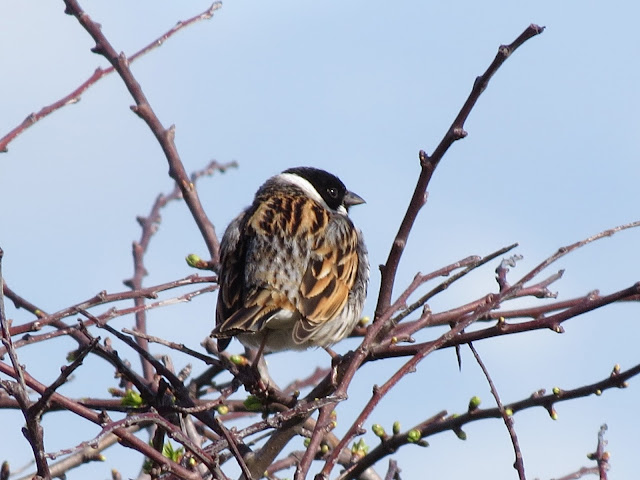A couple of hours to kill over the weekend and I decided to keep it local and headed up towards Ashbourne Rugby Club. There's an old abandoned building site that would have been a housing estate by now if the economy hadn't collapsed, but over the years nature has begun to reclaim the site and it now has its own small reed bed, and stubble field to go along with the existing stream and mature trees.
On this latest visit I had Whitethroat, Linnet, Redpoll, Tree Sparrow, Yellowhammer, Buzzard, Sparrowhawk, Snipe, Lapwing, and Stonechat, along with all the other usual suspects from the tit, finch and warbler families.
There were a couple of very obliging male Stonechats at either end of the patch, each as bold as the other. The Stonechat is a common bird in Ireland, it can be found on most outings, however its abundance shouldn't detract from its appearance, it really is a little cracker.






















